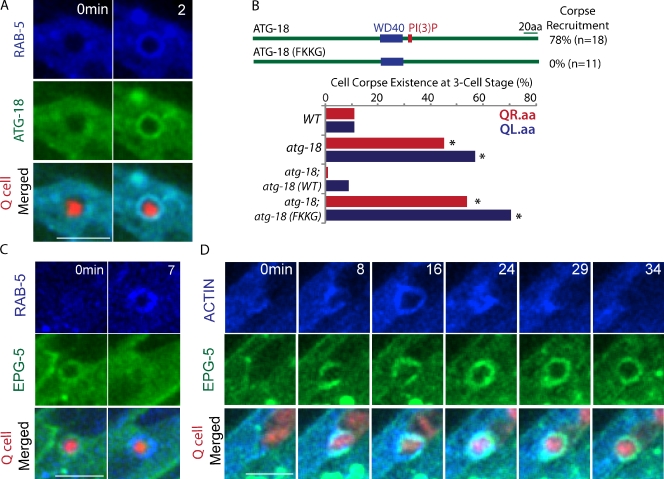Figure 4.
Sequential action of autophagy proteins during Q cell corpse degradation. (A) Still images show the corecruitment of BFP::RAB-5 with GFP::ATG-18 on the Q cell corpse. Time at 2 min is the first frame of RAB-5 and ATG-18 on the phagosome. (B, top) The PI(3)P binding motif of ATG-18 is required for ATG-18 recruitment on the Q cell corpse. n shows the number of Q.aa corpses examined. (bottom) Quantifications of QR.aa and QL.aa corpse degradation in WT and different genetic backgrounds at three-cell developmental stages. *, P < 0.01, χ2 test (mutant paired with WT). For each data point, n = 15–22 from a single experiment. Data about other cell types and developmental stage are given in Fig. S3. (C) The sequence of BFP::RAB-5 and EPG-5::GFP recruitment onto the Q cell corpse. Time at 0 min (the left column) shows the last frame of EPG-5::GFP on the phagosome, and time at 7 min (right) shows the first frame of GFP::RAB-5 on the Q cell corpse. (D) The sequence of engulfment (actin::BFP) and EPG-5::GFP during Q cell corpse degradation. Actin and EPG-5 were corecruited at 8 min, but EPG-5::GFP lasts longer on the phagosome (frame at 29 or 34 min). Bars, 5 µm.

